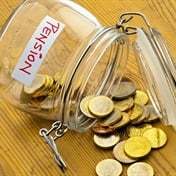Cape Town - The stats don’t lie! The ELV’s, far from promoting running rugby, have actually led to more kicking.
It has been most interesting to follow the fallout following the two-day meeting in London of rugby’s finest (or most misguided, depending on your view) brains to determine the future shape of the game and whether any of the ELVs will form any part of it.
Many southern hemisphere (read Australia and New Zealand, for South Africa remain ambivalent at best) coaches are incensed that in particular the Super 14’s ‘sanctions ELVs’, which downgrade most penalties to free-kicks, look set to be shelved en masse.
They say the ball is in play for longer periods, while the European unions are adamant the experimental laws are responsible for the aerial ping-pong that has without doubt infested the worldwide game in 2009. The ball may be in play longer, they say, but it spends that time in the stratosphere instead of in players’ hands.
But what do the stats from this year’s Super 14 tell us about the amount of kicking being done as opposed to the amount of time the ball is in hand? And how do the stats compare to last year’s tournament? Let’s take a look at the numbers from Verusco, the New Zealand-based company who supply video analysis systems (and the very same stats we use) to most of the South African Super 14 teams.
2008
A total of 439 players appeared in last year’s Super 14, playing a combined 224 834 minutes (or 3 747 hours). Over the course of the entire tournament, an incredible 225 619 metres (or 225.62 kilometres) were gained by kicking. This works out at an average of just under 514m kicked by each and every one of those 439 players.
Put another way, in the 2008 Super 14, the ball was kicked an average of 1.003 metres for every minute that every one of those 439 players were on the field. This stat may sound pointless, but when we compare it to the 2009 figure we can draw conclusions about the sheer volume of kicking being done.
Regarding metres gained with ball in hand, the 2008 tournament delivered a total of 155 557 metres (or just over 155 kilometres). Using the same maths as above, that works out to an average of 0.692m (or 69cm) gained for every minute that every one of those 439 players were on the field.
2009
With the 2009 tournament at the halfway stage, a total of 393 players have made an appearance on the field, playing a combined 107 641 minutes (or 1794 hours). Over the course of the first seven weeks, the total kicking metres gained has been 117 223 (or 117.22 kilometres).
The ball has therefore been kicked an average of 1.089 metres for every minute those 393 players have been on the field. The difference may not sound like much, but it does show that there has been an increase of 8.5% in metres gained from kicking in 2009 as opposed to last year.
Whether the increased kicks are made up primarily of ‘aerial ping-pong’, we don’t know, but an increase is an increase, be it in the amount of up-and-unders, grubber kicks, cross-kicks, etc. Put simply: there is more kicking this year than last year!
When we combine that stat with metres gained with ball in hand in 2009, the figures suggest, very simplistically, that while the ELVs have caused the ball to be in play longer, it actually spends less time in the hand and more time in the air.
A total of 73 169 metres have been gained by the 393 players that have played a combined 107 641 minutes in the 2009 tournament. Simple maths means that works out to an average of 0.670m (or 67cm) gained for every minute that every one of those players were on the field – a 3% drop on last year’s figure of 69cm.
This does not sound like much, but it’s definitely not the 10% or 20% increase that proponents of the sanctions ELVs, most notably the Australians, have been saying would be the case.
To finish off, let’s take a look at the players from 2008 and 2009 who have kicked the ball the most.
A total of eleven players each gained more than five kilometres of ground in 2008 by putting ball to boot. The Brumbies’ Mark Gerrard finished top of the list with 8621m, followed by the Waratahs’ Kurtley Beale with 8589m and the Blues’ Nick Evans on 7086m.
The highest South African was Stormers flyhalf Peter Grant in seventh place on 6212m, followed by the Lions’ Jaco van Schalkwyk (remember him?) on 5999m and the Bulls’ Derick Hougaard on 5623m.
Interestingly, the Crusaders’ Dan Carter only came in in 10th position with 5547m, while Bulls No 10 Morné Steyn was 12th with 4682m.
In 2009, Steyn is number one at the halfway stage, having kicked for 4850m, followed by the Force’s Matt Giteau (4161m) and the Chiefs’ Stephen Donald (3956m). The Sharks’ Stefan Terblanche is a surprise in fourth with 3530m while the next best South African is André Pretorius of the Lions in 11th position with 2807m.
Join us again on Tuesday, when we’ll review Week 8’s action.
• Verusco are suppliers of video analysis systems to most of the South African Super 14 teams. Find out more at www.verusco.com or email info@verusco.com.




 Publications
Publications
 Partners
Partners












